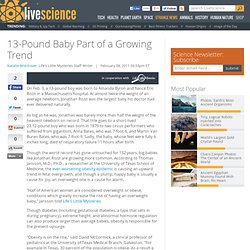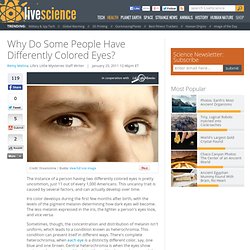

Researchers find bitter taste receptors on human hearts. A team of University of Queensland researchers is investigating the surprising discovery that smell and taste receptors normally found in the nose and mouth can also be present on the human heart.

The School of Biomedical Sciences team was able to observe the presence of the receptors as part of their ongoing research into the growth of human hearts during disease. Research team leader and Head of the School Professor Walter Thomas said the team would investigate the phenomenon, which was originally discovered by former UQ PhD student Dr Simon Foster. Dr Foster's findings are published in the Journal of the Federation of American Societies for Experimental Biology. "Dr Foster was able to show that around 12 taste receptors, particularly those that respond to bitter compounds, were expressed in human hearts," Professor Thomas said. "This is quite remarkable, as the human genome only has 25 of these bitter taste receptors, and we wanted to find out why half of them were located in the heart. Bitter taste receptor agonists elicit G-protein-dependent negative inotropy in the murine heart. + Author Affiliations ↵1Correspondence: School of Biomedical Sciences, University of Queensland, St.

Lucia, QLD 4072, Australia. E-mail: w.thomas@uq.edu.au Abstract G-protein-coupled receptors (GPCRs) are key mediators in cardiovascular physiology, yet frontline therapies for heart disease target only a small fraction of the cardiac GPCR repertoire. Footnotes This article includes supplemental data. Www.DownTheRoad.org - Bicycle Touring Around The World - 2002 to Present. The Human Marvels.
Canadian scientists transform human skin into blood. Dr.

Mickie Bhatia (photographed in his McMaster University lab in Hamilton on November 5, 2010) director the of stem cell and cancer research institute at McMaster University in Hamilton and his team of researchers have been able to create blood directly from adult skin cells. Photograph by: Glenn Lowson , National Post Canadian scientists have transformed pinches of human skin into petri dishes of human blood — a major medical breakthrough that could yield new sources of blood for transfusions after cancer treatments or surgery. The discovery, by researchers at McMaster University in Hamilton, Ont., could one day potentially allow anyone needing blood after multiple rounds of surgery or chemotherapy, or for blood disorders such as anemia, to have a backup supply of blood created from a tiny patch of their own skin — eliminating the risk of their body’s immune system rejecting blood from a donor.
Researchers predict the lab-grown blood could be ready for testing in humans within two years. Overweight People Have Thicker Thigh Bones. A skeleton can hold many clues about its deceased flesh-and-blood owner, and now research indicates that bones can show whether or not that person was overweight.

The key to ascertaining this is the thigh bone — a thick, weight-bearing bone called the femur. By studying the remains of 121 white men, two anthropologists have found the overweight men had wider femur bones. Ann Ross, an anthropologist at North Carolina State University and one of the researchers, described the change in the bone as "almost like a buttress making something stronger. " Fetal Overgrowth Stems from Maternal Obesity. On Feb. 3, a 13-pound boy was born to Amanda Byron and fiancé Eric Rozzi in a Massachusetts hospital.

At almost twice the weight of an average newborn, Jonathan Rozzi was the largest baby his doctor had ever delivered naturally. As big as he was, Jonathan was barely more than half the weight of the heaviest newborn on record. World's Fastest Talking Female. Why Do Some People Have Two Differently Colored Eyes? The instance of a person having two differently colored eyes is pretty uncommon, just 11 out of every 1,000 Americans.

This uncanny trait is caused by several factors, and can actually develop over time. Iris color develops during the first few months after birth, with the levels of the pigment melanin determining how dark eyes will become. The less melanin expressed in the iris, the lighter a person's eyes look, and vice versa. Sometimes, though, the concentration and distribution of melanin isn't uniform, which leads to a condition known as heterochromia.
This condition can present itself in different ways. Eye pigmentation abnormalities are not necessarily a sign of an underlying health condition. Heterochromia, however, is a common feature of several inherited genetic disorders. Irregular iris coloring can also be caused by an injury to the eye, such as a punch leading to bleeding within the eye. Got a question?